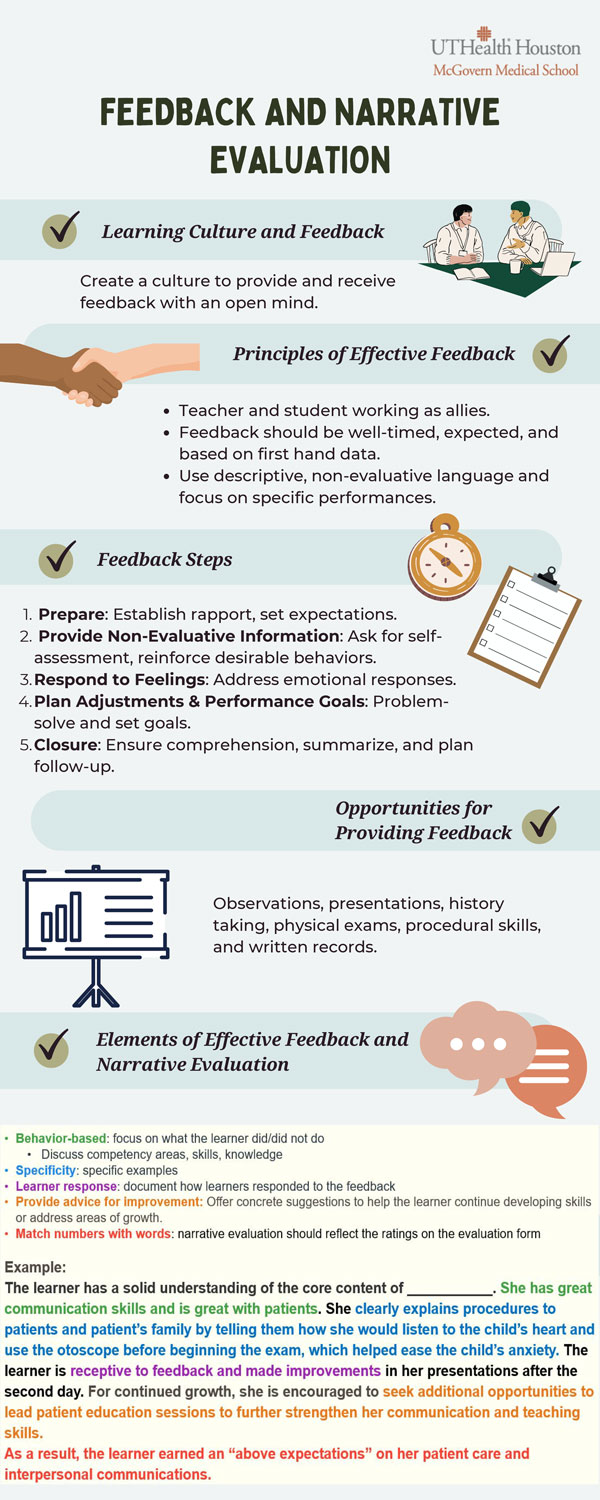OEP shares tips for providing valuable feedback
 The Office of Educational Programs at McGovern Medical School at UTHealth Houston is leading an exciting initiative to strengthen how our educators provide constructive, meaningful feedback and useful narrative evaluations that support learner growth and improvement.
The Office of Educational Programs at McGovern Medical School at UTHealth Houston is leading an exciting initiative to strengthen how our educators provide constructive, meaningful feedback and useful narrative evaluations that support learner growth and improvement.
Led by Peggy Hsieh, MEd, PhD, professor and assistant dean of Educational Programs, and Allison Ownby, PhD, professor and associate dean for the Office of Educational Programs, and Bindu Akkanti, MD, Graham Distinguished Professor in Pulmonary Medicine and assistant dean of Clinical Education, this effort fosters a culture where effective feedback drives continuous learning and excellence in education.
“Effective feedback is the cornerstone of continuous improvement. When delivered with specificity, empathy, and a focus on observable behaviors, feedback empowers individuals to recognize strengths, address areas for growth, and set actionable goals,” said Mark Hormann, MD, vice dean of Educational Programs and professor of pediatrics. “By fostering a culture where feedback is well-timed, expected, and based on firsthand observations, organizations enable learners and professionals alike to evolve and excel in their roles.”
Opportunities to provide feedback are everywhere
Every interaction with a learner offers a chance to provide feedback that supports their growth. The goal is to provide feedback that is constructive, specific, and actionable. When giving feedback or writing narrative evaluations, consider including the following elements:
- Behavior-based: Focus on what the learner did or did not do. Discuss observable behaviors, competency areas, skills, and knowledge.
- Specific: Provide concrete examples to illustrate your points.
- Learner response: Include observations on how the learner receives and applies feedback, demonstrating their engagement and commitment to improvement.
- Provide advice for improvement: Offer clear suggestions to help the learner build on strengths or address areas for improvement.
- Aligned: Ensure your narrative comments accurately reflect the ratings you assign on the evaluation form.
If you’re looking for practical ways to make your feedback more meaningful and effective, explore the Teaching Tips Corner from the Office of Educational Programs.